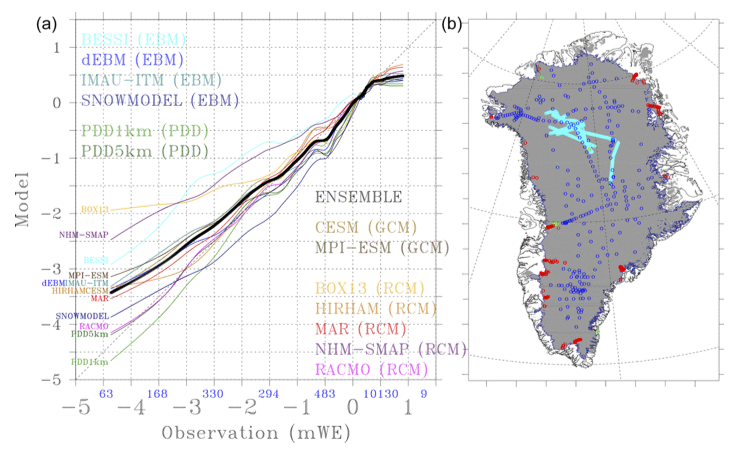
The article “Historically-based run-time bias corrections substantially improve model projections of 100 years of future climate change” written by Fettweis et al., was published on 11 November 2020 in The Cryosphere. It shows intercomparison of the Greenland Ice Sheet surface mass balance simulated by 13 models of 4 types (regional, global, energy balance, positive degree day) over current climate.
Here are the keys findings:
- Polar regional models (in particular MAR and RACMO) have the most accurate representation of SMB but biases of other but faster models are nevertheless of the same order of magnitude to those of polar regional models.
- The ensemble mean of the 13 models compares the best with in-situ observations. This allowed us to provide a SMB reference field over current climate with a model spread based uncertainty, which will be particularly useful to validate any future model developments.

- The mean runoff bias in the ablation zone mostly explains the large discrepancy between models and GRACE-derived mass loss trend and these runoff anomaly expressed in percentage of the ensemble mean remains constant in time, including the extreme summer 2012.
- A model overestimating current runoff should a priori overestimate the future sea level rise coming from the Greenland Ice Sheet by roughly the same amount, justifying the importance of well representing the current mean climate and trend before performing future projections.
